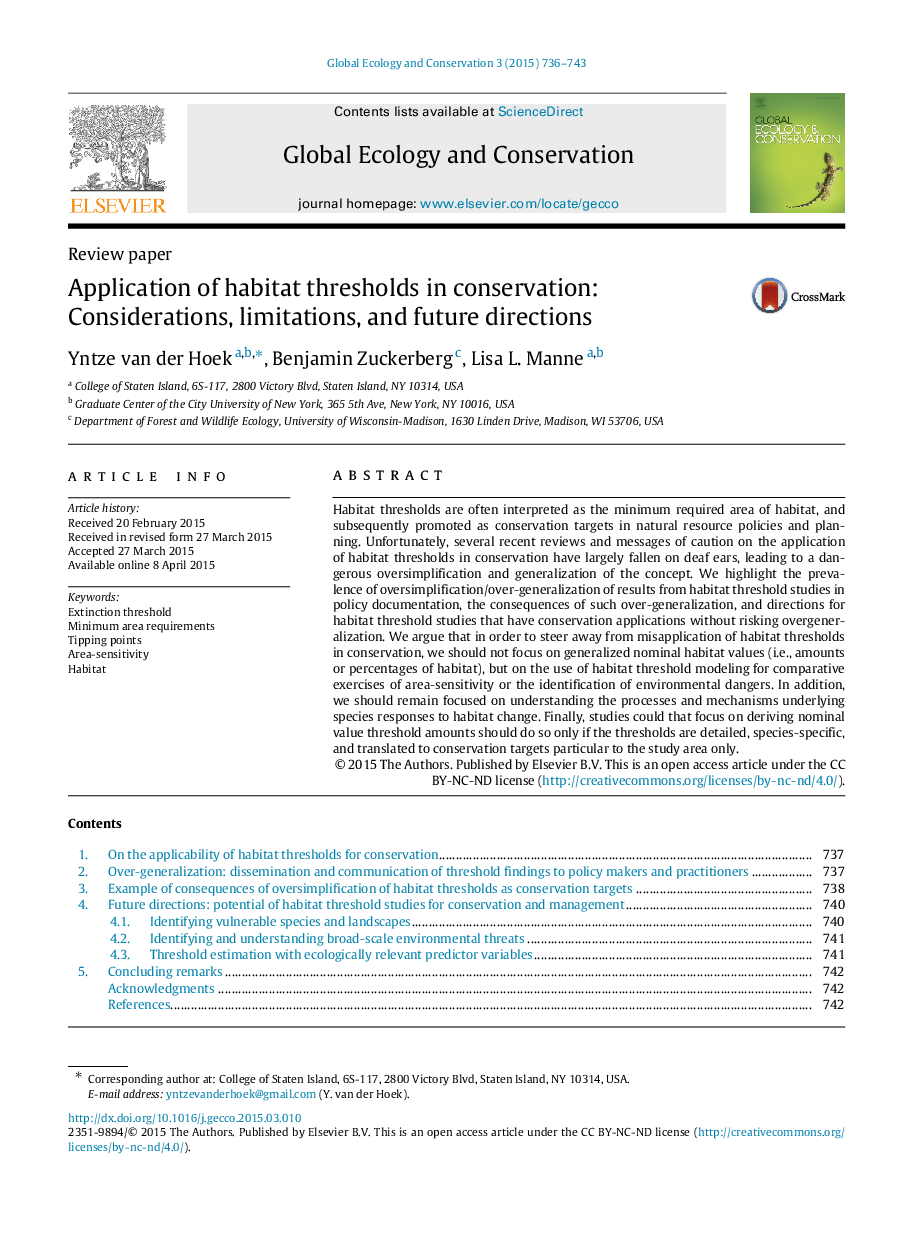| Article ID | Journal | Published Year | Pages | File Type |
|---|---|---|---|---|
| 4379623 | Global Ecology and Conservation | 2015 | 8 Pages |
Habitat thresholds are often interpreted as the minimum required area of habitat, and subsequently promoted as conservation targets in natural resource policies and planning. Unfortunately, several recent reviews and messages of caution on the application of habitat thresholds in conservation have largely fallen on deaf ears, leading to a dangerous oversimplification and generalization of the concept. We highlight the prevalence of oversimplification/over-generalization of results from habitat threshold studies in policy documentation, the consequences of such over-generalization, and directions for habitat threshold studies that have conservation applications without risking overgeneralization. We argue that in order to steer away from misapplication of habitat thresholds in conservation, we should not focus on generalized nominal habitat values (i.e., amounts or percentages of habitat), but on the use of habitat threshold modeling for comparative exercises of area-sensitivity or the identification of environmental dangers. In addition, we should remain focused on understanding the processes and mechanisms underlying species responses to habitat change. Finally, studies could that focus on deriving nominal value threshold amounts should do so only if the thresholds are detailed, species-specific, and translated to conservation targets particular to the study area only.
